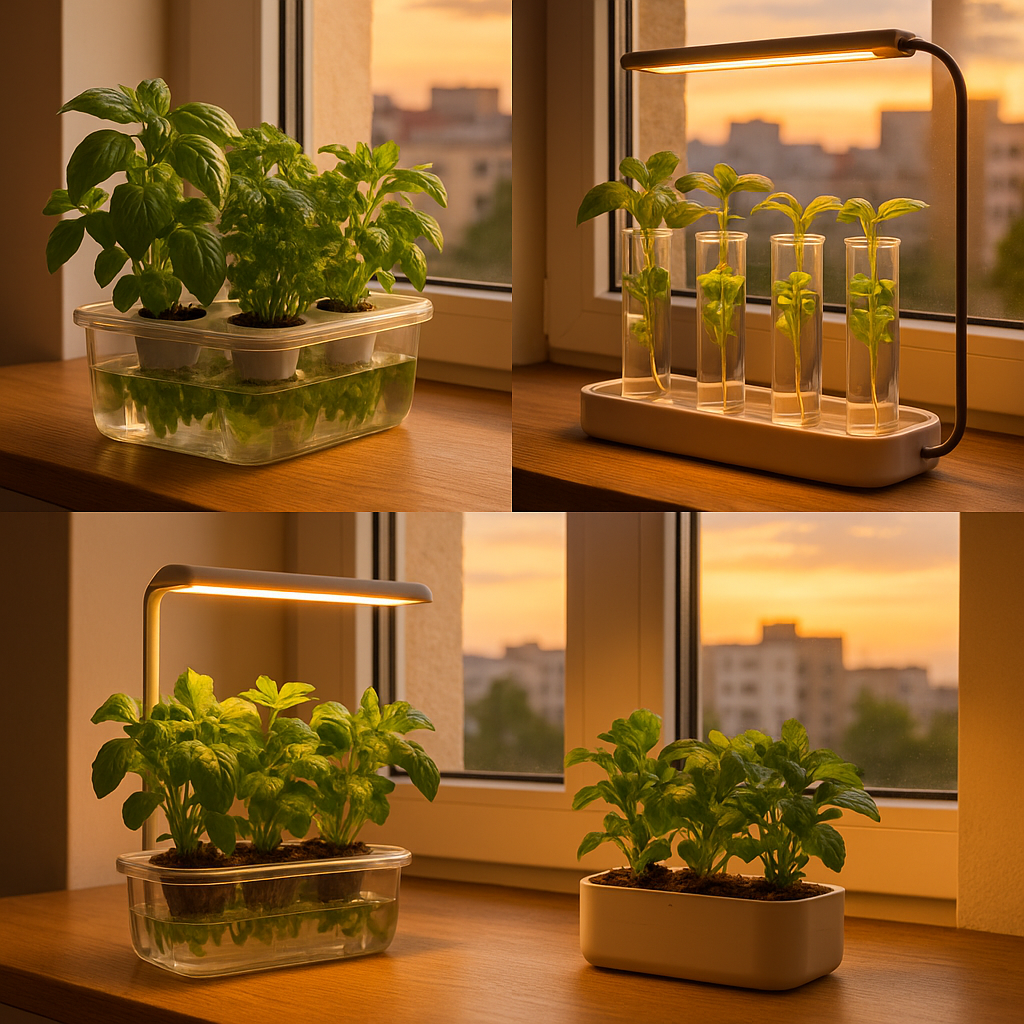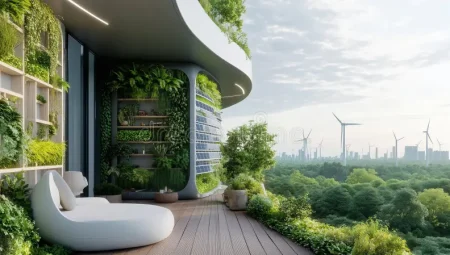Do you dream of fresh, homegrown produce but find your gardening ambitions limited by a tiny apartment windowsill? The solution might be closer, and simpler, than you think! In 2025, DIY hydroponic systems for apartment windowsills are empowering urban dwellers to cultivate vibrant, soil-free gardens right in their homes. This innovative approach to indoor gardening isn’t just a trend; it’s a testament to sustainable living, efficient space utilization, and the pure joy of harvesting your own food, regardless of your living space. If you’re a city dweller, a tech-curious gardener, or simply someone yearning for year-round greens, this comprehensive guide is for you. Get ready to transform your smallest sunny spot into a thriving hydroponic oasis!
The Urban Green Revolution: Why DIY Hydroponics is Thriving on Windowsills
Urbanization continues its rapid pace, with over 56% of the world’s population now residing in cities, a figure projected to rise to 68% by 2050 (United Nations, 2018). This means smaller living spaces and a growing disconnect from traditional food sources. Hydroponics, the method of growing plants without soil using nutrient-rich water, offers a powerful antidote. When adapted for the micro-scale of an apartment windowsill, it becomes an incredibly efficient and accessible way to bring fresh produce indoors.
The Unrivaled Advantages of Windowsill Hydroponics
- Unmatched Space Efficiency: Traditional gardening requires significant horizontal space. Hydroponics, especially for small, leafy plants, can be incredibly compact, making a windowsill surprisingly productive.
- Accelerated Growth Rates: Plants in hydroponic systems often grow 20-30% faster than in soil because their roots have direct access to oxygenated nutrients, without needing to search for them.
- Superior Water Conservation: Hydroponic systems are closed-loop, meaning water is recirculated. This can result in up to 90% less water usage compared to conventional soil gardening, a crucial factor in water-stressed urban environments.
- Year-Round Harvests: No reliance on seasons or outdoor weather means you can enjoy fresh basil in January or crisp lettuce in July, all from your kitchen.
- Cleaner and Pest-Resistant: The absence of soil drastically reduces the risk of soil-borne pests and diseases, making indoor gardening much cleaner and less prone to infestations.
- Cost-Effective & Sustainable: While initial setup can vary, a DIY hydroponic system for your apartment windowsill is often more economical than constantly buying store-bought produce and significantly reduces your food’s carbon footprint. A 2024 study by the Urban Agriculture Collective estimated that small-scale home hydroponics can cut household fresh produce expenses by up to 25% annually.
Building Your Miniature Farm: Essential Components for Windowsill Hydroponics
Even the simplest hydroponic system relies on a few fundamental components working in harmony. Understanding these will empower you to build and maintain your own thriving windowsill garden.
The Core Elements of Any Windowsill Hydroponic System
- Reservoir: This is the container that holds your nutrient solution. It must be opaque or dark-colored to prevent light penetration, which would encourage algae growth.
- Nutrient Solution: A precise mixture of water and essential mineral nutrients that plants need to grow. This replaces the role of soil in providing food.
- Growing Medium (Inert): A sterile material that provides physical support for the plant’s roots while allowing water and air circulation. Common examples include rockwool, coco coir, clay pebbles (hydroton), or perlite.
- Net Pots or Plant Holders: Small mesh cups or collars that hold the plant and growing medium, allowing the roots to extend into the nutrient solution.
- Light Source: Your primary light source will be the natural sunlight from your windowsill. However, for optimal growth, especially during darker months or for plants requiring more light, supplemental LED grow lights are highly recommended.
- Aeration (Optional but Recommended): For active systems, an air pump and air stone oxygenate the nutrient solution, crucial for healthy root development and preventing root rot. For very small or passive systems, this may not be strictly necessary, but it significantly boosts plant vigor.
Your Green Thumb, Your Way: 5 Effective DIY Hydroponic Systems for Apartment Windowsills
Ready to get your hands a little wet (but not dirty!)? Here are five practical and easy-to-implement DIY hydroponic systems perfectly suited for apartment windowsills in 2025, from ultra-simple passive setups to slightly more involved active ones.
1. The Ultra-Simple “Kratky Method” (Non-Circulating System)
The Kratky Method is the epitome of passive hydroponics, making it ideal for absolute beginners and the smallest windowsills. It requires no electricity or pumps.
How it Works:
Plants are suspended in net pots with their roots partially submerged in a static nutrient solution. As the plant consumes water and nutrients, the water level drops, creating an air gap that naturally provides oxygen to the roots.
DIY Steps:
- Materials: An opaque container (e.g., a painted Mason jar, dark plastic food container, or even a repurposed milk jug), a net pot (2-4 inches), a rockwool cube for sprouting, hydroponic nutrient solution, and a pH testing kit.
- Construction: Cut a hole in the lid of your chosen container that’s just large enough for your net pot to sit securely without falling in.
- Setup: Fill the container with your pre-mixed nutrient solution. Place your sprouted seedling (in its rockwool cube) into the net pot, ensuring the bottom of the rockwool cube is touching the nutrient solution.
- Best For: Leafy greens (lettuce, spinach, kale), most herbs (basil, mint, cilantro), and small radishes.
- Pros: Extremely simple to set up and maintain, requires no electricity, very low cost.
- Cons: Nutrient solution depletion means it’s best for plants harvested within a few weeks; not suitable for long-term plants.
2. The Reliable “Wick System” (Passive & Consistent)
The Wick System is another excellent passive option for apartment windowsills, offering consistent moisture to your plants without constant monitoring.
How it Works:
Nutrient solution is held in a reservoir below a growing tray. Wicks (made of absorbent material) extend from the reservoir up into the growing medium surrounding the plant roots, drawing solution upwards via capillary action.
DIY Steps:
- Materials: Two opaque plastic containers (one for the reservoir, one for the growing tray), wicking material (nylon rope, felt strips, or even old cotton shoelaces), growing medium (coco coir, perlite, or a mix), net pots (optional, but helpful), hydroponic nutrients.
- Construction: Drill several small holes (about 1/4 inch) in the bottom of the upper container (the growing tray). Thread your wicks through these holes, making sure they extend well into the bottom reservoir.
- Setup: Place your growing medium in the upper container. If using net pots, place them in the growing medium. Fill the lower container with nutrient solution. Ensure the wicks are saturated and touching the nutrient solution.
- Best For: Herbs, leafy greens, small ornamental plants, and even small flowering plants.
- Pros: No electricity needed, very consistent moisture supply, low maintenance.
- Cons: Wicks can sometimes become saturated with mineral buildup, which reduces efficiency; less oxygenation than active systems.
3. The Efficient Mini “Deep Water Culture” (DWC) System (Active & Fast Growth)
For those looking for faster growth and robust plants on their windowsill, a scaled-down Deep Water Culture (DWC) system is a fantastic choice, though it requires a small air pump.
How it Works:
Plant roots are suspended directly in a reservoir of nutrient solution that is continuously aerated by an air pump and air stone. This constant oxygen supply promotes rapid root growth and nutrient uptake.
DIY Steps:
- Materials: An opaque container (e.g., a plastic shoebox or small storage tote), net pots, a small aquarium air pump, air stone, air tubing, hydroponic nutrients, rockwool cubes.
- Construction: Drill holes in the lid of your chosen container for the net pots. Place the air stone at the bottom of the reservoir and connect it via air tubing to the air pump.
- Setup: Fill the reservoir with pre-mixed nutrient solution. Place your sprouted seedlings (in rockwool) into the net pots, ensuring the bottom of the net pot is submerged in the solution. Plug in the air pump.
- Best For: Fast-growing leafy greens (lettuce, spinach), basil, and other herbs. Small, compact fruiting plants like dwarf peppers might also succeed with adequate light.
- Pros: Very rapid plant growth, excellent root oxygenation, relatively simple to monitor nutrient levels.
- Cons: Requires electricity for the air pump (minimal power consumption), regular pH and nutrient level monitoring is crucial.
4. The Precision DIY “Drip System” (Active & Adaptable)
A micro-drip system can be incredibly precise and adaptable for a windowsill, allowing you to feed multiple plants individually. This system is slightly more involved but offers great control.
How it Works:
A small submersible pump in a main reservoir pushes nutrient solution through thin tubing to individual drippers positioned at the base of each plant. Excess solution drains back into the reservoir for recirculation.
DIY Steps:
- Materials: Opaque main reservoir, small submersible aquarium pump (e.g., 50-100 GPH), small diameter drip irrigation tubing, adjustable drippers/emitters, small individual plant pots (with drainage holes), growing medium (coco coir, perlite), hydroponic nutrients.
- Construction: Place the pump in the main reservoir. Run the main tubing line from the pump. Create branch lines with drippers for each plant pot. Ensure all individual plant pots are placed on a tilted tray or within a larger container that allows excess solution to drain back into the main reservoir.
- Setup: Place your growing medium and plants in their individual pots. Position the drippers near the base of each plant. Fill the main reservoir with nutrient solution and turn on the pump.
- Best For: A wider variety of plants, including larger herbs like rosemary, small pepper plants, and even compact tomato varieties, as it allows for customized feeding.
- Pros: Highly efficient water and nutrient delivery, adaptable for different plant types, excellent root aeration if media is properly chosen.
- Cons: More components and slightly more complex setup than passive systems, requires electricity for the pump.
5. The Repurposed “Bottle Garden” (Creative & Eco-Friendly)
This highly sustainable and visually appealing system leverages recycled plastic bottles to create individual or connected mini-hydroponic units.
How it Works:
Typically, plastic bottles are cut in half, with the top inverted into the bottom to create a mini-reservoir and growing cup. A wick or passive system allows nutrient solution to reach the plant. Alternatively, multiple bottles can be connected horizontally in a series.
DIY Steps:
- Materials: Several 1.5-2 liter plastic bottles, sharp knife/scissors, wick material (for a wick system version), growing medium, hydroponic nutrients.
- Construction (Example – Top-Fed Wick Bottle): Cut a plastic bottle about 1/3 of the way down from the top. Invert the top section (with the cap on, or with a hole drilled in the cap for a wick) into the bottom section.
- Setup: Thread a wick through the bottle cap if using. Place your growing medium and seedling in the inverted top section. Fill the bottom section (reservoir) with nutrient solution, ensuring the wick is submerged.
- Best For: Small herbs, single lettuce plants, sprouts, and propagating cuttings.
- Pros: Extremely low cost, excellent for recycling and reducing waste, highly customizable and decorative.
- Cons: Limited plant size, may require more frequent manual top-offs depending on design, less scalable than other systems.
Featured Snippet Optimization: Your Quick Guide to Windowsill Hydroponics
How to Build a DIY Hydroponic System for an Apartment Windowsill?
To build a DIY hydroponic system for an apartment windowsill, begin with simple methods like the Kratky or Wick system. For Kratky, use an opaque container as a reservoir, cut a hole in its lid for a net pot, fill with nutrient solution, and place your plant so roots touch the liquid. For a Wick system, connect an upper growing tray to a lower reservoir with wicks. Always ensure your chosen system fits your windowsill dimensions and provides adequate light for your selected plants.
Pro Tips for Your Thriving Windowsill Hydroponic Garden
- Prioritize Light: Even on a windowsill, light is often the limiting factor. A simple, full-spectrum LED grow light (starting from around $20-30) can dramatically improve growth, especially during shorter days or for low-light windows. Place it on a timer for 12-16 hours daily.
- Master pH & EC: For consistent success, invest in an affordable pH meter and an EC (Electrical Conductivity) meter. These tools are crucial for ensuring your plants absorb nutrients effectively. Aim for a pH of 5.5-6.5 for most hydroponic plants.
- Prevent Algae: Algae competes with your plants for nutrients and can clog systems. Always use opaque reservoirs and growing media, and minimize light exposure to the nutrient solution.
- Maintain Cleanliness: Hydroponic systems require regular cleaning (every 2-4 weeks) to prevent salt buildup, algae, and nutrient imbalances. Flush and refill your reservoir with fresh nutrient solution.
- Air Circulation: Good airflow is important, even for small indoor plants. It helps prevent fungal issues and strengthens plant stems. A small clip-on fan can make a big difference.
- Start with Seeds or Cuttings: While you can transfer soil-grown plants, starting from hydroponic-specific seeds or clean cuttings often yields better results and reduces the risk of introducing pests or diseases.
Frequently Asked Questions (FAQ)
Q1: What are the best plants to grow in a DIY windowsill hydroponic system for beginners?
For beginners, the easiest plants to grow in a DIY windowsill hydroponic system are leafy greens like lettuce (especially butterhead and romaine varieties), spinach, and kale. Herbs such as basil, mint, chives, and cilantro also thrive. These plants have relatively simple nutrient requirements, grow quickly, and are well-suited to the compact nature of windowsill setups.
Q2: How often should I change the nutrient solution in my DIY hydroponic system?
For passive systems like Kratky, you often just top off the reservoir with plain water (and sometimes a very small amount of fresh nutrients) as the water level drops. For active systems like DWC or drip systems, it’s generally recommended to change the entire nutrient solution every 1-2 weeks. This ensures plants receive a balanced nutrient profile and prevents potential nutrient imbalances or buildup that can hinder growth.
Q3: Can I use regular tap water for my hydroponic system, or do I need special water?
You can generally use regular tap water for your DIY hydroponic system for apartment windowsills. However, it’s advisable to let tap water sit for 24 hours to allow chlorine to dissipate. For optimal results, consider testing your tap water’s initial pH and EC/TDS (Total Dissolved Solids) to understand its baseline and make precise adjustments with your hydroponic nutrients. In some areas with very hard water, using filtered or reverse osmosis water might be beneficial.
Q4: My plants are wilting in my hydroponic system. What could be wrong?
Wilting in a hydroponic system can be caused by several factors. Check your nutrient solution’s pH and ensure it’s within the ideal range (5.5-6.5); improper pH can lock out nutrients. Verify that your air pump (if active) is working and the air stone is bubbling effectively, as roots need oxygen. Also, check for over or under-fertilization. Too much light or heat, or even a lack of water (in passive systems as the reservoir dries), can also cause wilting.
Q5: How do I prevent algae growth in my windowsill hydroponic system?
Preventing algae growth is crucial. Always use opaque containers for your nutrient reservoir, as algae require light to grow. If light hits the solution, algae will proliferate, competing with your plants for nutrients and potentially causing blockages. You can also cover any exposed parts of the system with aluminum foil or black plastic, and ensure regular cleaning of your reservoir and components.
Conclusion: Your Apartment, Your Harvest
The vision of a flourishing garden on an apartment windowsill is no longer a distant dream. With DIY hydroponic systems for apartment windowsills, you possess the tools to cultivate fresh, healthy produce, transforming even the smallest urban spaces into vibrant, productive ecosystems. Embrace the simplicity, efficiency, and profound satisfaction of growing your own food. It’s time to take control of your plate, one thriving plant at a time.
What hydroponic system are you excited to build first for your apartment windowsill? Share your thoughts and questions in the comments below!



